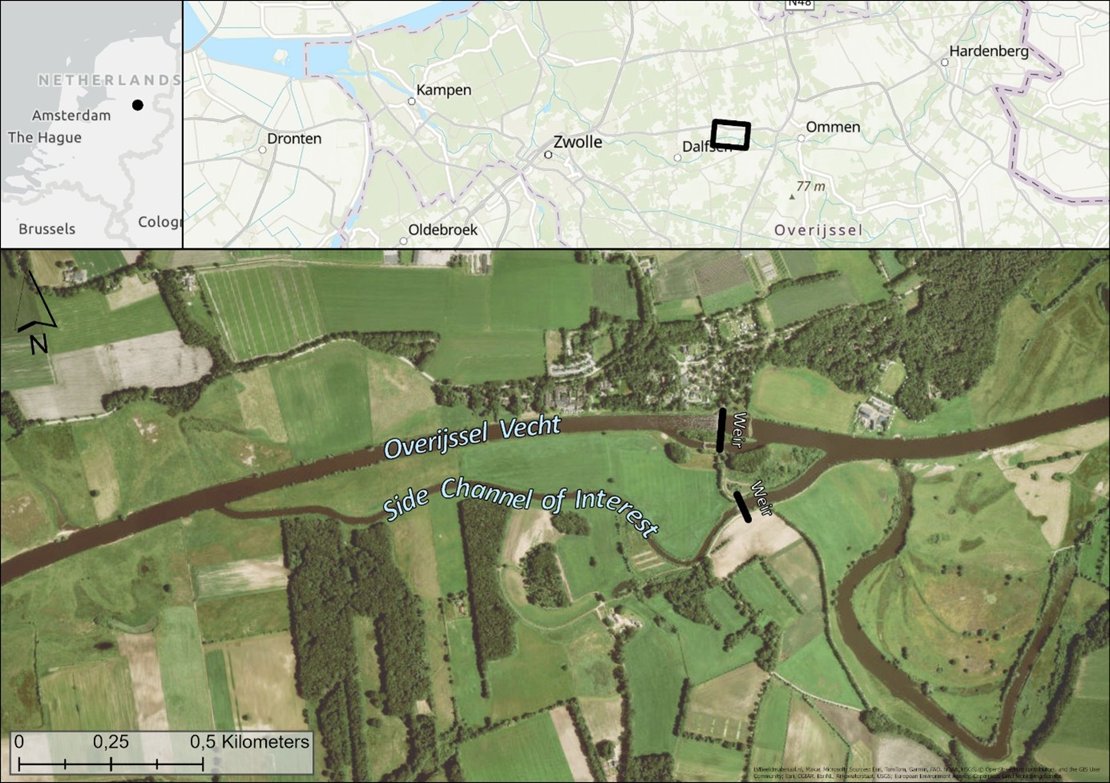River side channels are constructed to give more room to the river and to improve the ecological functions of the river. However, it is not easy to estimate what the morphodynamic response of the system will be after constructing a side channel. The side channel morphology depends on the portions of the flow discharge and sediment transport that are extracted from the main channel, as well as on the way it was initially designed. These interactions can subsequently also affect the morphology of the main channel at the connection points.
In this project, you will investigate the morphological development in and around a side channel in the River Vecht near Ommen, where the flow is regulated by weirs (Figure 1). This side channel was constructed a few years ago with a width of approximately 20 m and a simple trapezoidal cross-section and partially fixed banks, but it has evolved since then. You can start this project by assessing the current situation and trying to understand the morphodynamic activity based on existing data. Subsequently, you can extend the analysis by either numerical modelling or by carrying out some field measurements (if it is logistically feasible). For the former option, the Waterboard Drents Overijsselse Delta has a 2D hydraulic model that you can either consider extending to a morphodynamic model (at least a simplified part of it in case the morphodynamic model becomes too heavy or it is too difficult to extend to the morphodynamic model) or use the hydraulic output to deduce the morphological response of the system in an idealized way. Within this project, you may have the option to conduct some measurements to extend the existing data with additional bed level and maybe flow velocity measurements. The exact research methods (existing data analysis and numerical modelling or new measurements) will be determined during the preparatory phase of the project based on your interests and the feasibility of the methods within the project.

Figure 1 The side channel in the River Vecht that will be used as case study





